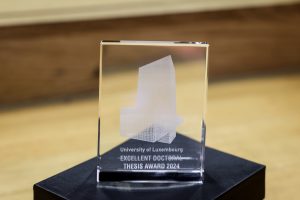Once again, the University of Luxembourg proudly celebrates the achievements of 12 exceptional doctoral candidates who have been awarded the prestigious Doctoral School of Science and Engineering (DSSE) Excellent Doctoral Thesis Award for their outstanding research. These candidates have demonstrated excellence across a broad range of disciplines, addressing critical issues and offering innovative solutions. With their groundbreaking work now in the spotlight, these talented candidates are poised to make impactful contributions in both academia and industry as they continue to advance their careers.
Doctoral Programme in Computer Science and Computer Engineering
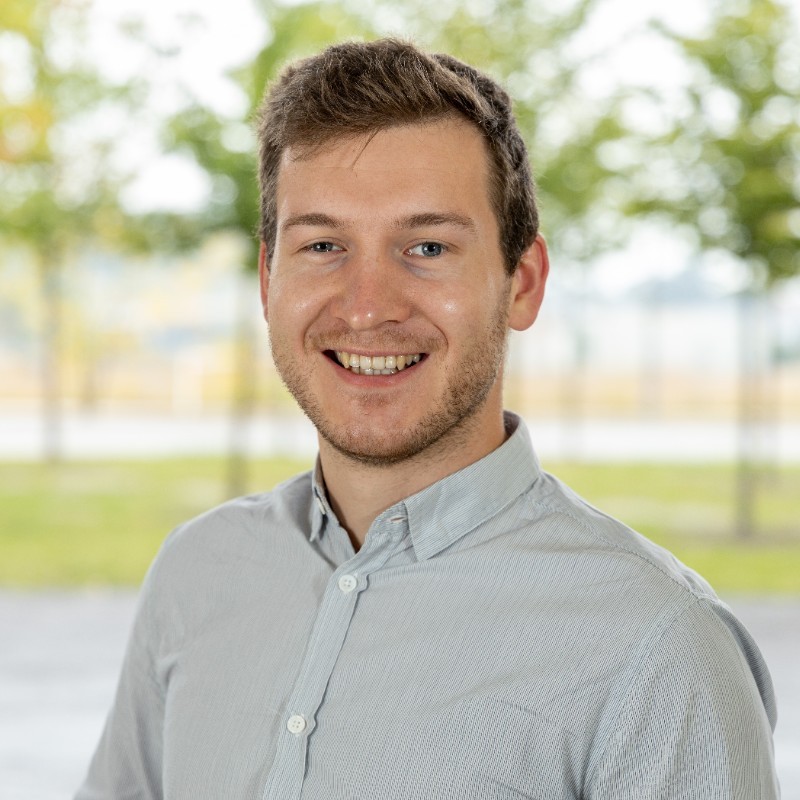
Florian FELTEN
Thesis title: Multi-objective reinforcement learning
Supervisor: Grégoire DANOY
Felten’s work explores how artificial intelligence (AI) systems can tackle real-world challenges that involve balancing multiple goals or coordinating multiple agents. Unlike humans, who naturally make compromises based on their preferences when making decisions, most current AI systems focus on optimizing a single objective or a fixed combination of objectives, limiting their adaptability. For instance, ChatGPT balances between providing concise answers and delivering accurate information, but the trade-off it follows is pre-determined by engineers and does not adapt to individual user preferences. To address such limitations, the author introduces Multi-Objective Reinforcement Learning (MORL), creating a framework that enables AI agents to dynamically balance competing objectives. The work also develops tools like MOMAland, MO-Gymnasium, and MORL-Baselines to test and standardize these methods. By bridging the gap between theoretical models and real-world deployment, this researchaccelerates learning processes and lays the foundation for scalable and adaptable AI systems capable of making context-sensitive decisions.
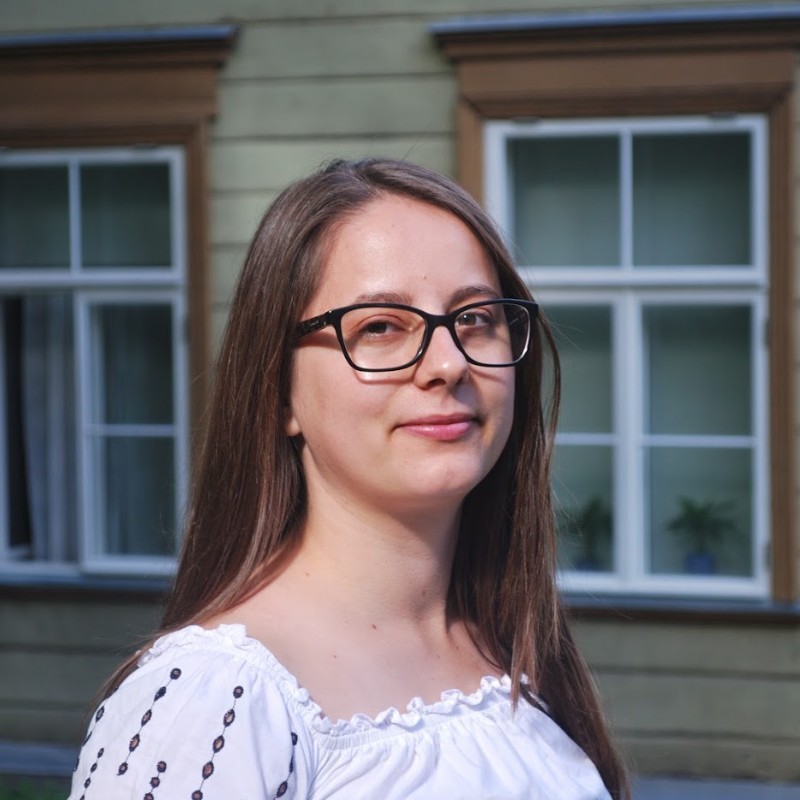
Salijona DYRMISHI
Thesis title: Enhancing machine learning security: The significance of realistic adversarial examples
Supervisor: Maxime CORDY
A critical challenge in machine learning (ML) security is creating realistic adversarial examples, that is inputs designed to expose vulnerabilities in ML models. These examples are crucial for testing and improving model robustness, ensuring systems can withstand real-world threats once deployed. Dyrmishi’s research examines evaluation criteria for realism across multiple domains (finance, cybersecurity, media), especially emphasizing the need for text-based adversarial examples that not only deceive models but also pass human perceptibility tests, an aspect where many state-of-the-art methods struggle. To address this, she developed a novel method using Constrained Deep Generative Models for tabular data, which creates domain-specific realistic examples that effectively test ML systems. Additionally, she has explored the impact of using unrealistic versus realistic adversarial examples for adversarial training to improve model robustness, showing when realism is essential and when simpler examples suffice. By addressing gaps in the realism of adversarial examples for testing and hardening ML models, her work advances ML systems resilient to real-world threats.
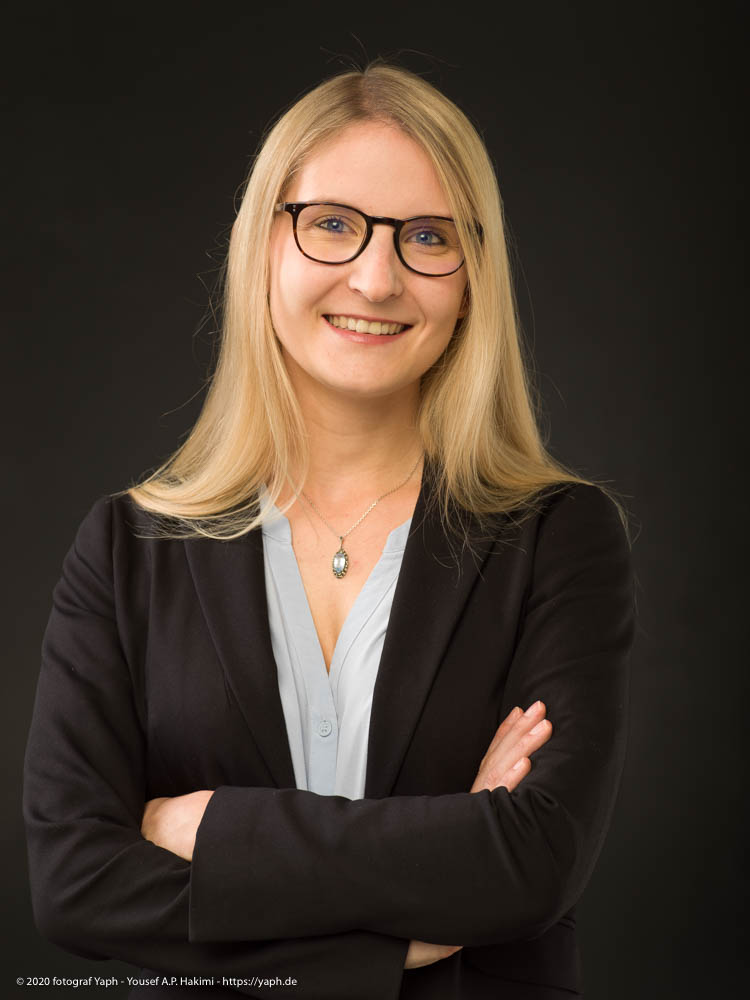
Tamara ROTH
Thesis title: Innovating with emerging it in highly structured environments – An organizing vision perspective on blockchain and digital identity wallets
Supervisor: Gilbert FRIDGEN
Organizations in highly structured environments, such as government agencies and utilities, can innovate using emerging information technologies (IT) like blockchain and digital identity wallets. Focusing on organizing vision theory, this research examines how these organizations interpret and adopt new IT in the face of structural and cultural challenges. Roth’s key findings emphasize the need for a critical engagement with emerging technologies, urging organizations to evaluate IT capabilities against their specific needs rather than succumbing to hype. The work highlights practical examples, such as Leipzig’s adaptation of blockchain for green energy credit trading and Germany’s FLORA system, which successfully integrated blockchain into the legal and procedural context of data sharing. It also explores the importance of addressing both structural and cultural barriers to adoption, offering strategies for aligning technology with organizational norms and legal frameworks. The research provides a roadmap for structured organizations to successfully adopt emerging IT and drive innovation within their unique settings.
Doctoral Programme in Systems and Molecular Biomedicine
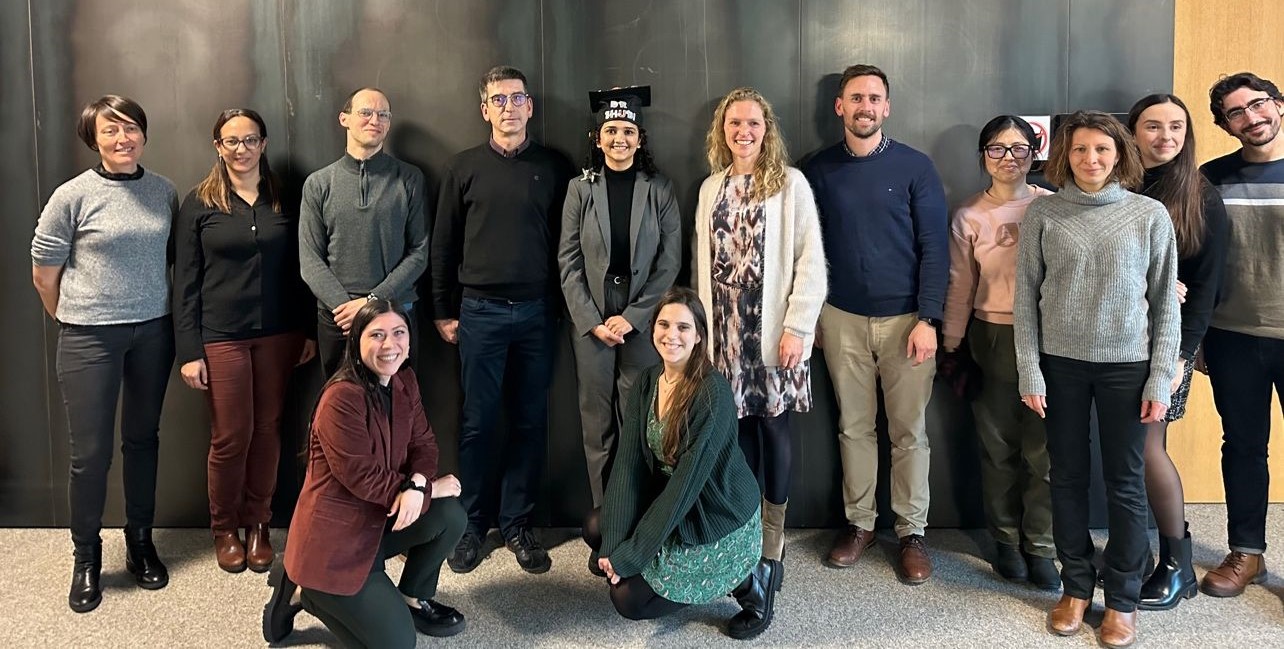
Shubhra ACHARYA
Thesis title: Long noncoding RNAs in tissue repair
Supervisor: Yvan DEVAUX
Non-coding RNAs are a class of RNA molecules that play key roles in disease development. However, their function in Parkinson’s Disease (PD) is poorly known. The PhD project of Shubhra Acharya at the Cardiovascular Research Unit of the Luxembourg Institute of Health revealed regulations of ncRNAs in experimental models of PD and in the blood of PD patients. The research also identified a circulating messenger RNA molecule as a potential biomarker for PD, as it correlates with disease severity and symptoms such as sleep disturbances. From a translational perspective, blood RNAs could serve as simple, non-invasive and accessible diagnostic tools to aid in PD diagnosis. Shubhra’s research paves the way for more personalized management and improved outcomes of PD.
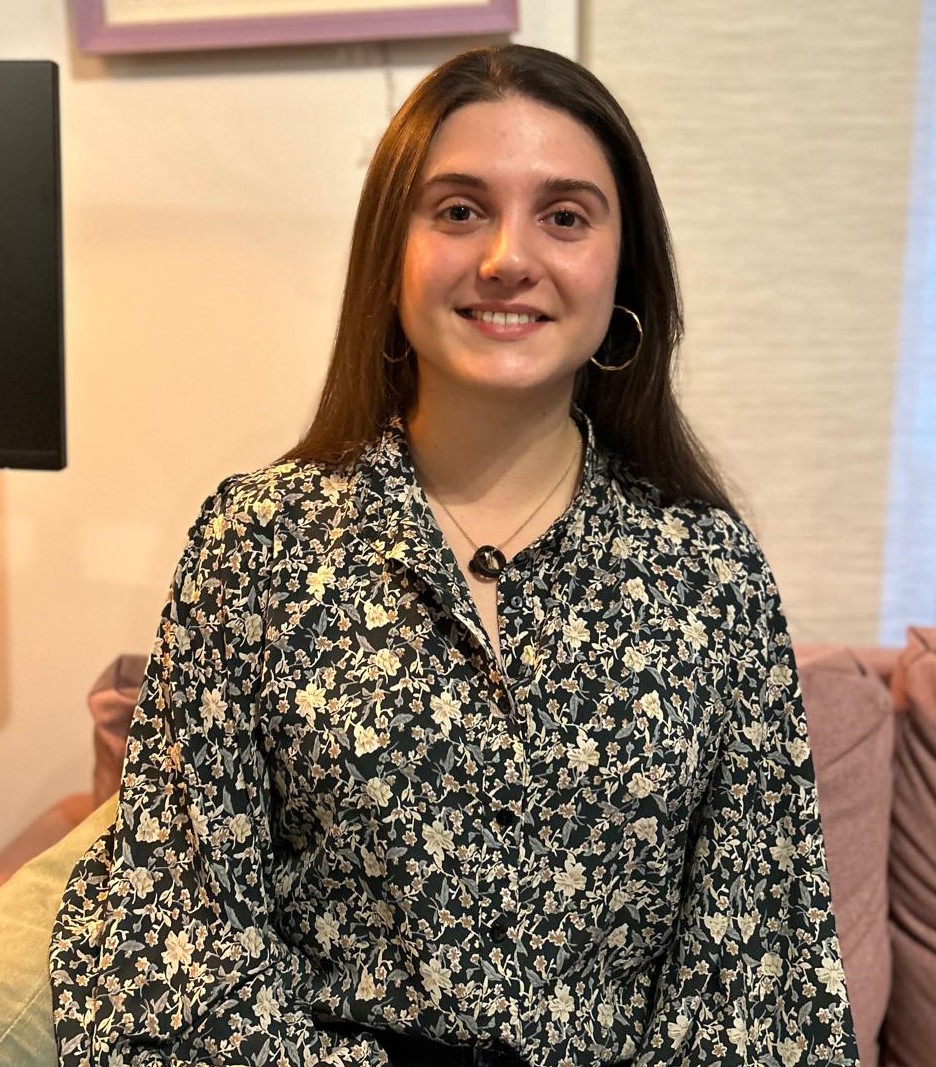
Iria Carmen FERNANDEZ BOTANA
Thesis title: Exploring T-cell heterogeneity in chronic lymphocytic leukemia to unravel immune-based therapeutic strategies
Supervisor: Jerome PAGGETTI
Chronic Lymphocytic Leukemia (CLL) is a challenging and currently incurable blood cancer, In CLL, T-cells become exhausted, losing their ability to fight the cancer. In this thesis, Fernandez investigates the role of T-cells with the goal of developing immune-based therapies. Her research maps T-cell dysfunction and interactions in unprecedented detail using advanced techniques like mass cytometry and single-cell RNA sequencing. Moreover, she identified Galectin-9, a protein that suppresses T-cells, as a promising therapeutic target. By blocking Galectin-9 in pre-clinical models, T-cell function was restored, slowing CLL progression. Her study also highlights the immune-signalling molecule IL-27, which improved T-cell activity and reduced leukaemia burden in mice. These findings suggest novel ways to restore T-cell function and offer hope for more effective immune-based treatments for CLL patients.
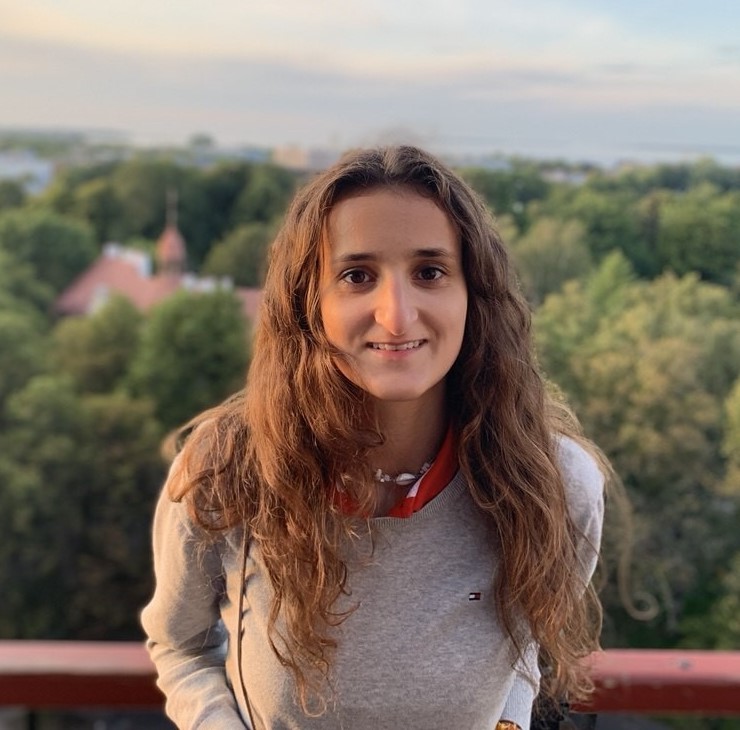
Begoña TALAVERA ANDÚJAR
Thesis title: Metabolomics and exposomics approaches to better understand neurodegenerative diseases using cheminformatics tools and high-resolution mass spectrometry
Supervisor: Emma SCHYMANSKI
Environmental factors, gut bacteria, and small molecules contribute to neurodegenerative diseases (NDs) like Parkinson’s and Alzheimer’s. This PhD thesis investigates the role of metabolomics and exposomics, integrated with high-resolution mass spectrometry, in understanding NDs. Through three studies, Talavera explores potential biomarkers, disease mechanisms, and the exposome’s influence on these conditions. The research also identifies challenges in exposome study design, analytical platforms, and compound annotation. The thesis contributes to personalized medicine by offering new insights into environmental and metabolic factors, paving the way for improved diagnostic and therapeutic strategies for NDs. It underscores the need for standardized workflows and advanced tools to tackle the complexity of the exposome.
Doctoral Programme in Physics and Material Sciences
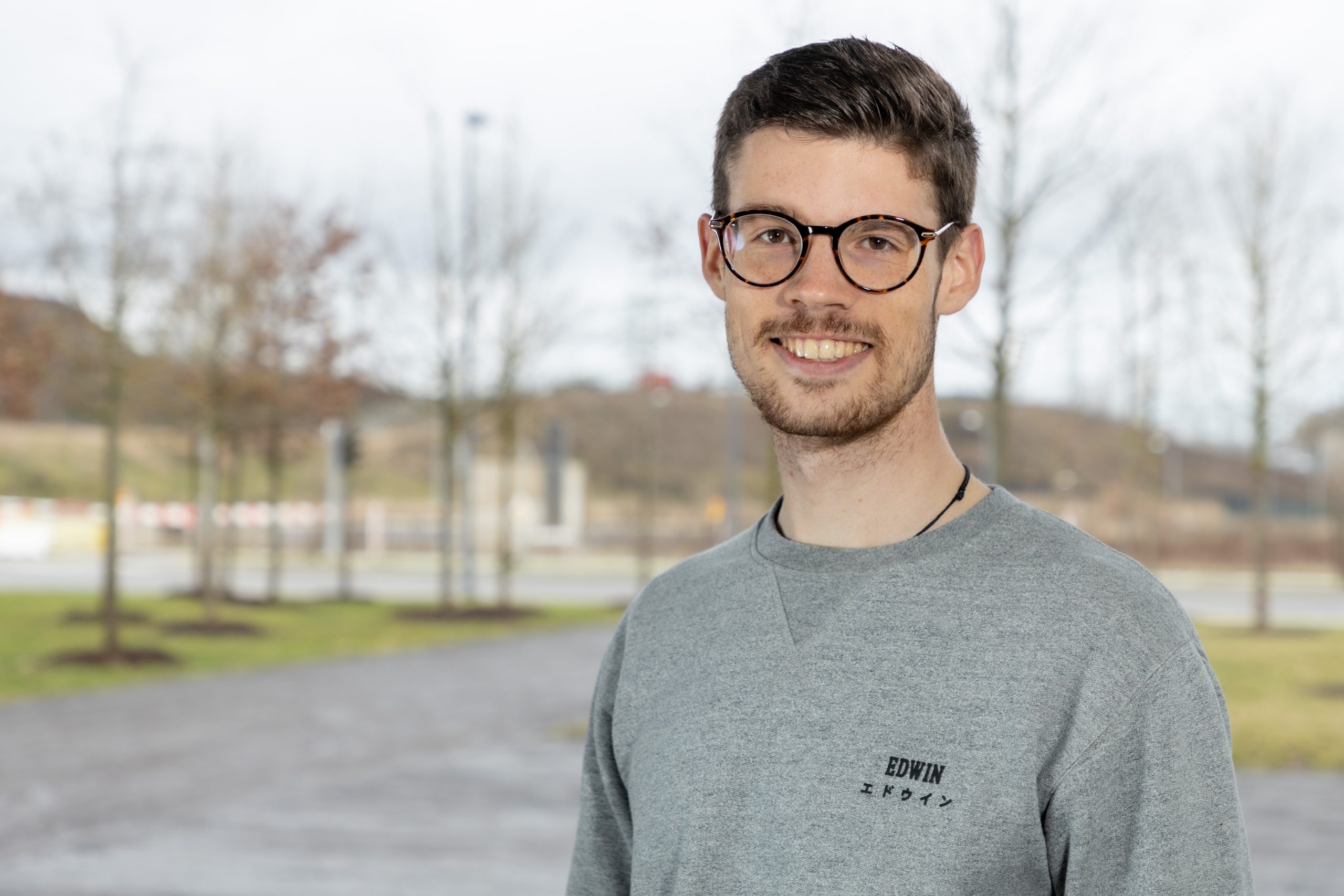
Thomas DECKERT
Thesis title: Ultrafast exciton and free charge carrier dynamics in condensed matter studied by multidimensional spectroscopy
Supervisor: Daniele BRIDA
This thesis focuses on understanding how semiconductors behave when exposed to extremely short pulses of light. Using advanced techniques like two-dimensional spectroscopy, the research enables precise measurements of fundamental energy transfer processes within materials on femtosecond (that is, a millionth of a billionth of a second) timescales. Deckert’s work introduces improvements to tools and techniques for studying these materials, including a new optical parametric amplifier. Several experiments investigate both bulk semiconductors and promising monolayer materials to uncover how particles like excitons and free charge carriers affect their properties. These discoveries help explain how light interacts with materials at incredibly fast timescales, opening up exciting possibilities for applications in materials science, optoelectronics, and nanotechnology towards the development of next-generation devices and ultrafast material manipulation.
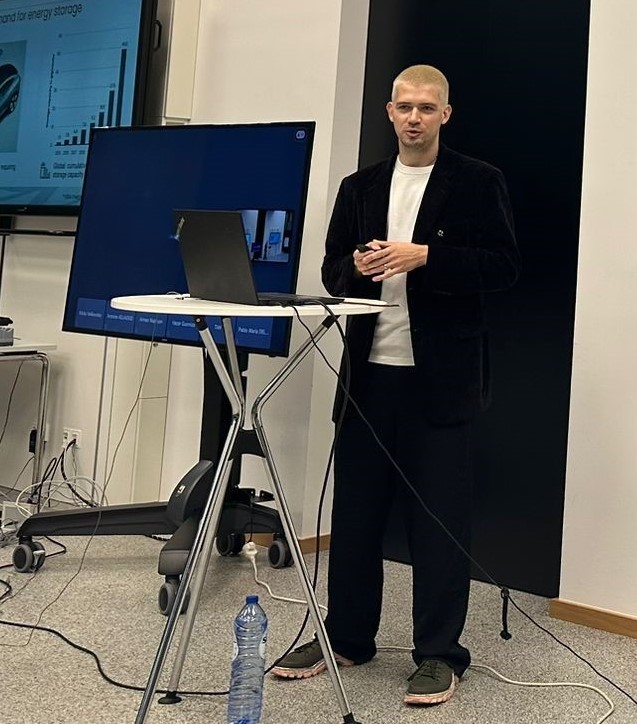
Daniil NOSOV
Thesis title: Novel polymer electrolytes derived from coacervation of complementary poly(ionic liquids) and/or charged silica nanoparticles
Supervisor: Alexander SHAPLOV
Dynamic Ion Gels (DIGs) represent a groundbreaking class of polymeric materials that synergistically combine high ionic conductivity with robust mechanical properties. These innovative materials were created Nosov through the careful design and mixing of oppositely charged poly(ionic liquid)s (PILs), what led to the formation of dynamic ionic cross-links and the in-situ generation of ionic liquid within the material. The resulting DIGs exhibit an optimal balance of conductivity and mechanical strength, addressing a long-standing challenge in electrochemical devices: the need for materials that are both conductive and durable. Among the developed DIGs, one particular sample demonstrated exceptional properties, including superior ionic conductivity, remarkable stiffness, and outstanding performance in all-solid-state supercapacitors. This material not only outperformed its parent PILs in terms of energy and power density, but also maintained its functionality at elevated temperatures, highlighting its potential for applications in harsh operating environments. This research underscores the versatility of DIGs, showcasing their adaptability for advanced technologies such as thin-film transistors and batteries. This breakthrough represents a significant leap forward in energy storage and next-generation materials, offering safer, more efficient solutions for electrochemical devices and beyond.
Doctoral Programme in Engineering Sciences

Alfredo ROMERO GUZMAN
Thesis title: Demountable and reusable steel-timber composite (STC) beams
Supervisor: Christoph ODENBREIT
This PhD thesis presents a novel approach to sustainable construction by developing demountable and reusable steel-timber composite (STC) beams. These beams combine hot-rolled steel beams and laminated veneer lumber slabs, offering improved performance, reduced
waste, and greater reusability in line with circular economy principles. Romero introduces here innovative shear connectors that enable easy disassembly while maintaining structural integrity, allowing for reuse after each cycle. Additionally, his research includes numerical models that accurately predict bending capacity, stiffness, and vibration behaviour, ensuring the STC system’s performance in real-world applications. This work offers a sustainable and reusable solution for modern construction, contributing to reducing waste and supporting carbon-neutral building practices.
Doctoral Programme in Complex Systems Science
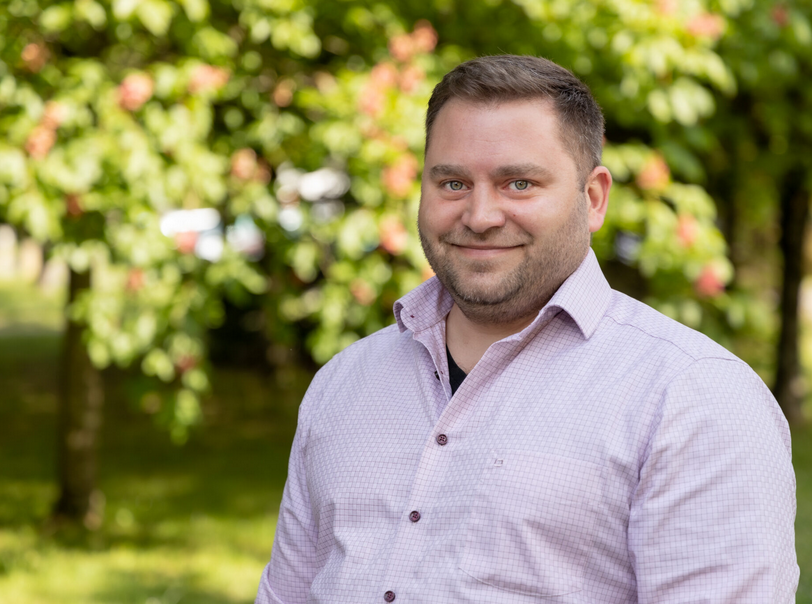
Johannes LAUR
Thesis title: Mitigating radio blackout in hypersonic flights and atmospheric entries – Computational electromagnetics and experimental validation
Supervisor: Jan THOEMEL
During hypersonic flights and spacecraft re-entry, radio communication blackouts (loss of communication) might occur. The very high velocities in combination with friction causes to heat up the air and becoming a super-energetic gas, where atoms are broken apart into charged ions and electrons. This makes it glow and behave in exciting ways, like the bright lights in neon signs or the flicker of lightning in the sky, but it can disrupt communication. This works focuses on how plasma and magnetic fields impact this signal propagation. Using a ray-tracing approach, the author examines both magnetized and non-magnetized plasma environments to better understand how these factors alter radio signals. Key findings include the effects of plasma on signal path, intensity, polarization, and phase shift, as well as the complex impact of magnetized plasma, which can cause Faraday rotation and affect polarization. One significant contribution is the development of the MHD Ray Tracer, a tool that analyses signal behaviour in complex plasma environments. The research also investigates magnetic field windowing as a potential solution to mitigate radio blackouts, offering low-refractive-index corridors for improved communication. This research provides valuable insights into improving communication systems for hypersonic travel and space exploration.
Doctoral Programme in Mathematics and Applications
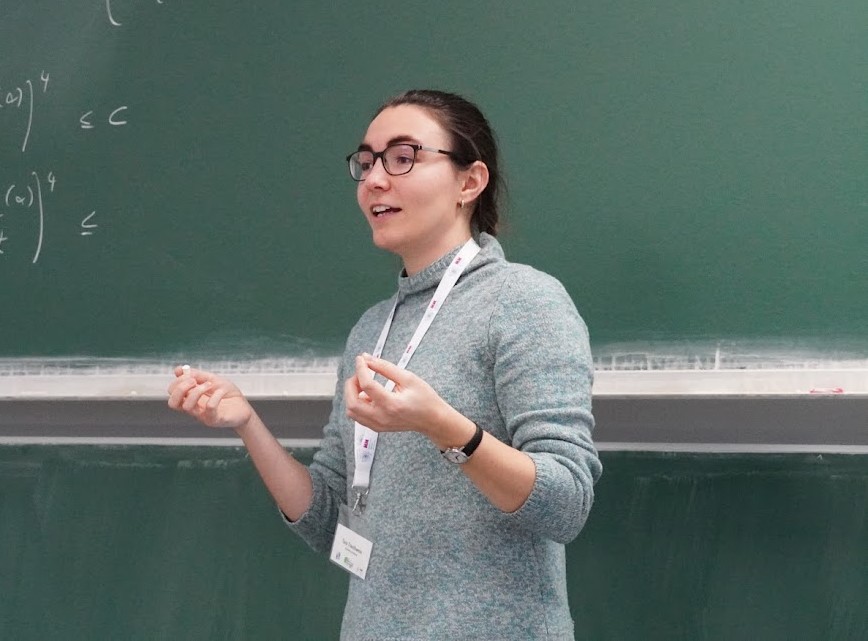
Tara TRAUTHWEIN
Thesis title: Quantitative CLTs on the Poisson space via p-Poincaré inequalities
Supervisor: Giovanni PECCATI
How much does the maintenance of a large communications network cost? This and similar questions motivate the study of mathematical graph models at large scales. Typically, one shows, using precise mathematical tools, that many quantities, like costs, derived from random graphs behave at large scales like the standard Gaussian distribution, a well-studied object. Trauthwein’s thesis delves into the theory behind the tools necessary to show such results and extends one of the most useful existing methods as far as possible so that it can be used to treat all outlier models which were previously out of scope. Her thesis then applies these new deep theoretical results to a selection of models, closing among other things a question asked in 2009.
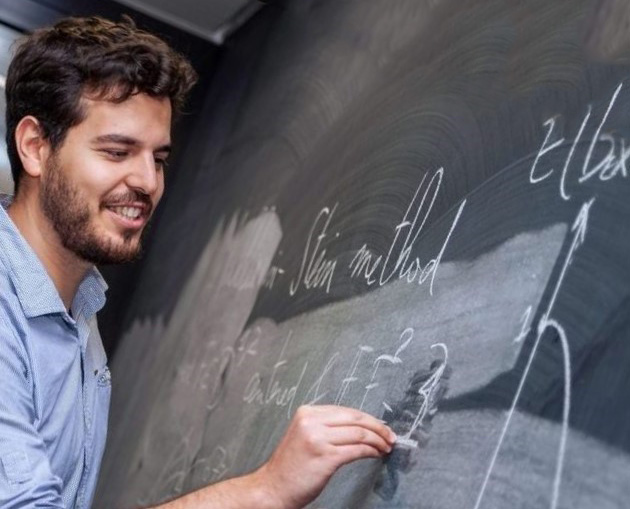
Leonardo MAINI
Thesis title: On some asymptotic results on functionals of weakly stationary random fields
Supervisor: Ivan NOURDIN
A random field is a mathematical function used to describe how random values vary across a specific domain, like space, time, or other inputs. These fields are useful when exact predictions are impossible, helping to understand patterns in randomness. This thesis focuses on studying the geometric and analytic properties of random fields in a growing domain, with a particular emphasis on the case where the random values are Gaussian (with a bell-shaped probability distribution). For decades, experts believed that certain random quantities (functionals) associated with Gaussian random fields have a Gaussian asymptotic probability distribution only if the field has short memory, meaning random variables are “independent enough” for distant values. Maini’s work challenges that belief, these functionals may have a Gaussian asymptotic distribution in a long memory setting, a phenomenon that had not been previously observed. It also establishes new methods for calculating the relationships between functionals over different domains, with potential applications in physics, statistics, weather prediction, and environmental science.
Doctoral Programme in Humanities
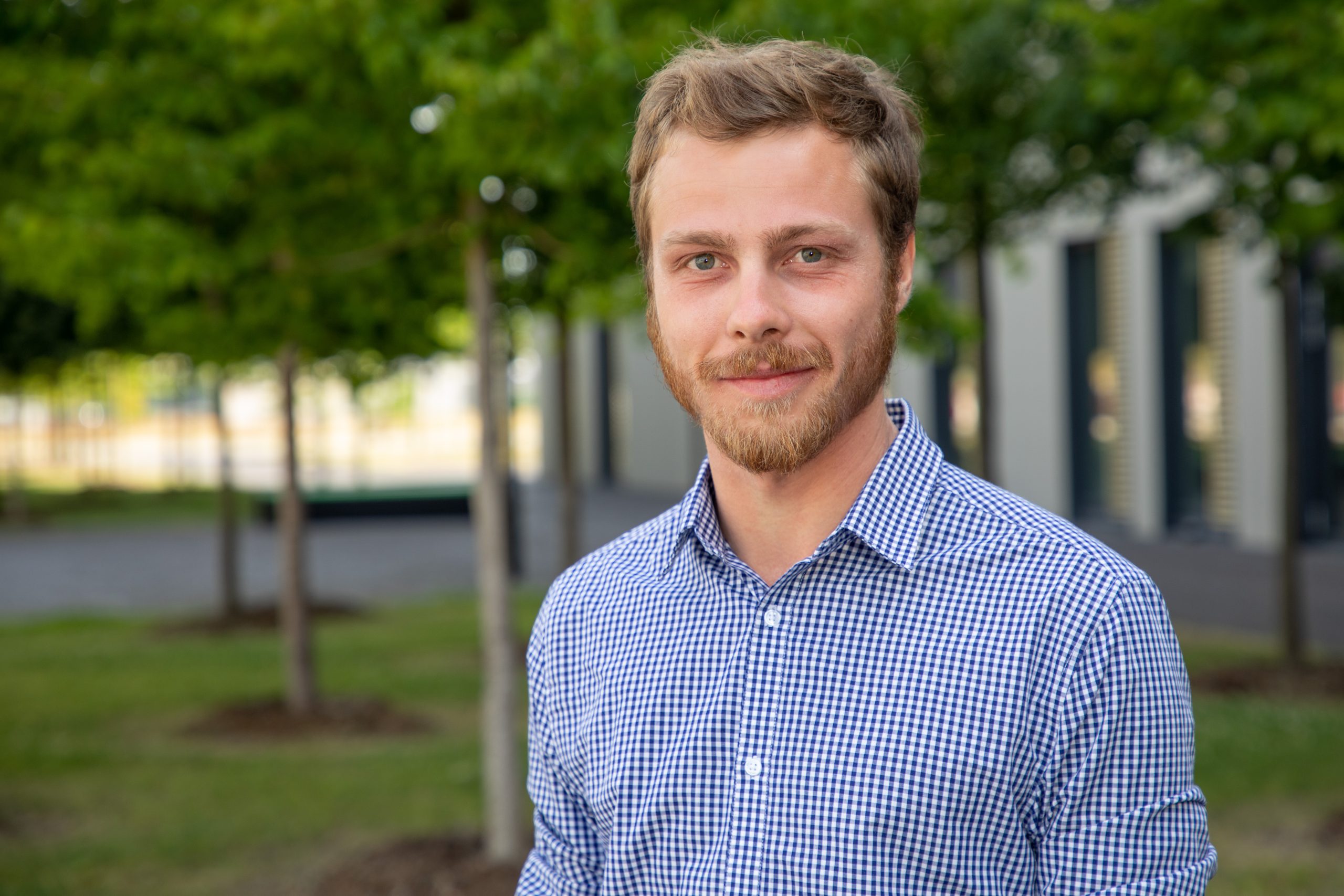
Yannick KOHL
Thesis title: Rational Reflection: The Powers and Limits of Rational Metacognition
Supervisor: Frank HOFMANN
As human beings, we not only navigate daily life but also reflect on who we are and what we should do. We question our decisions, reassess our beliefs, and strive for self-improvement. Traditionally, reflection has been seen as an automatic path to better reasoning and action. However, this optimistic view has faced criticism from philosophers and cognitive scientists, who point to empirical evidence suggesting that reflection can be biased and unreliable. In his dissertation, Yannick Kohl develops a novel approach to rational reflection, modelling it within the framework of epistemic defeat and the basing relation. He examines whether reflection is necessary for knowledge and morality or if it contributes to self-improvement, ultimately arguing that, while fallible, it remains crucial to our intellectual and moral lives when practiced with awareness and care.
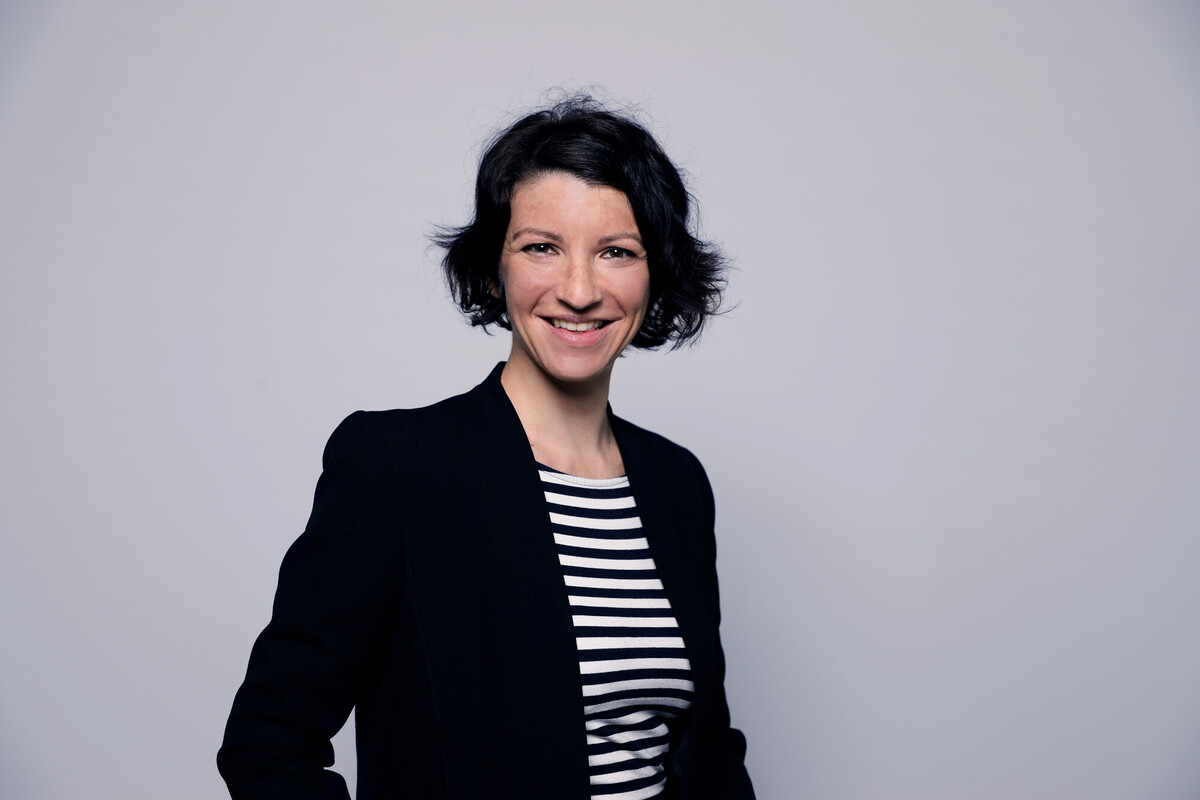
Blandine LANDAU
Thesis title: Looking for the spoliated Jews: Plundering and « aryanization » in Luxembourg during World War Il
Supervisors: Andreas FICKERS, Isabelle BACKOUCHE
Though some research had been previously conducted on this tapie, this dissertation was the first academic research project focusing exclusively on the persecution of people considered as Jews in Luxembourg during World War Il, and the first independent academic research conducted on their dispossession. This was an important step in a country where the memory of the Shoah only appeared in the public space in 2018 and where academic work on the persecution of the Jews was almost inexistant until 2022 (most of the historiography consists in the publications by Paul Cerf, a journalist born in one of the eldest Jewish families of the second biggest town of Luxembourg, Esch-sur-Alzette).
Paul Cerf mentioned the dispossession in his writings, but the main publication dedicated to this issue so far was the report written by the Special Commission for the study of the spoliation of Jewish property in Luxembourg during the years of war 1940-1945 (Commission spéciale pour l’étude des spoliations des biens juifs au Luxembourg pendant les années de guerre 1940-1945). This Commission had been created at the request of the parliament after public and political pressure, and its report had been given to the Prime Minister in 2009 (and originally not made public). Though its conclusions seek to maintain the idea that no further discussion of this tapie was necessary since the Luxembourgish government held no responsibility in this matter, major political changes in 2013 led to the creation of another commission, whose goal was to establish if Luxemburgish authorities had played a part in the persecution of people considered as Jews who had lived in the Great-Duchy before and during World War Il. The conclusions of this commission, published in a public report in 2015, led to both the parliament and the government to apologize to the Jewish community. ln 2018 the first public monuments remembering the Shoah and its victims were unveiled, a Luxemburgish foundation for the memory of the Shoah was created, and the first project it financed was a doctoral dissertation focusing on the spoliation of Jewish property during World War Il in Luxembourg.

Irene PORTAS VÁZQUEZ
Thesis title: Underground Histories: Border Transgression and Subversion in the Minette (1919-1939)
Supervisor: Christoph BRÜLL
The history of the French-Luxembourgish border has been marked by the rapid growth of the iron and steel industry and the massive influx of immigrants coming to work in this cross-border industrial region. Employing a microscopic lens and narrating countless stories, this doctoral research dives into the underground of this borderland in the interwar years through the exploration of smuggling practices and Italian communist networks. Smugglers and transalpine militants pushed the limits of legality, challenging the legitimacy of public authorities and laying bare the pitfalls of national sovereignty in the margins. Outlawed behaviours across the French-Luxembourgish frontier speak not only about the border, but they also tell us about the intimate link between national boundaries and other phenomena, such as frontline state agents, immigrant communities in industrial contexts, and political ideologies swirling over Western Europe in the 1920s and 1930s. By plunging ourselves in the worlds of clandestine actors and practices, we come across the hopes, fears, concerns, and desires of those who would otherwise fall into oblivion with the passing of time.
